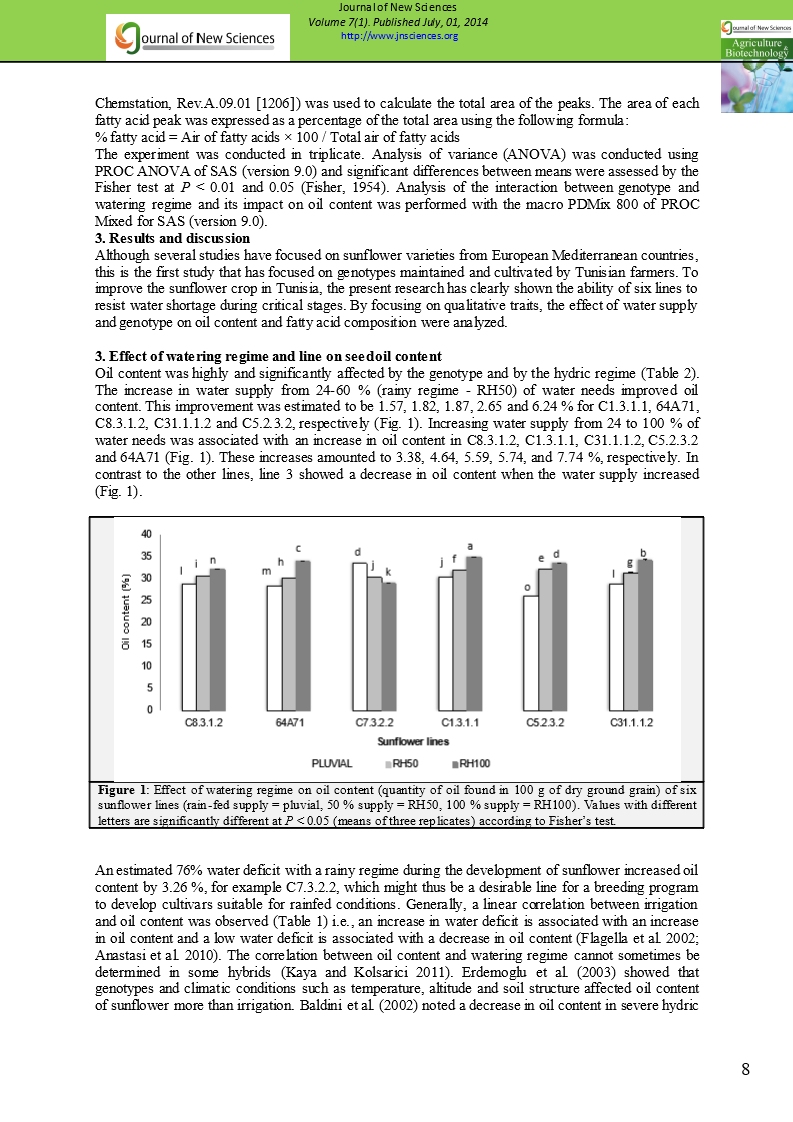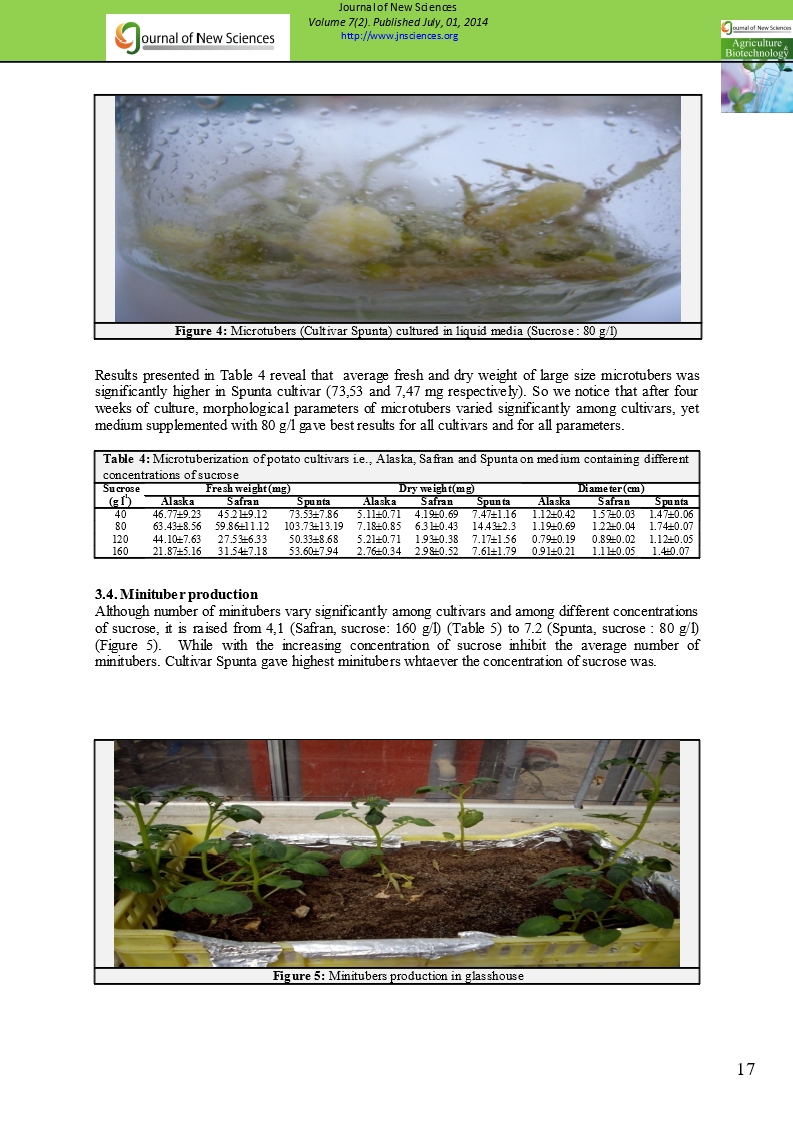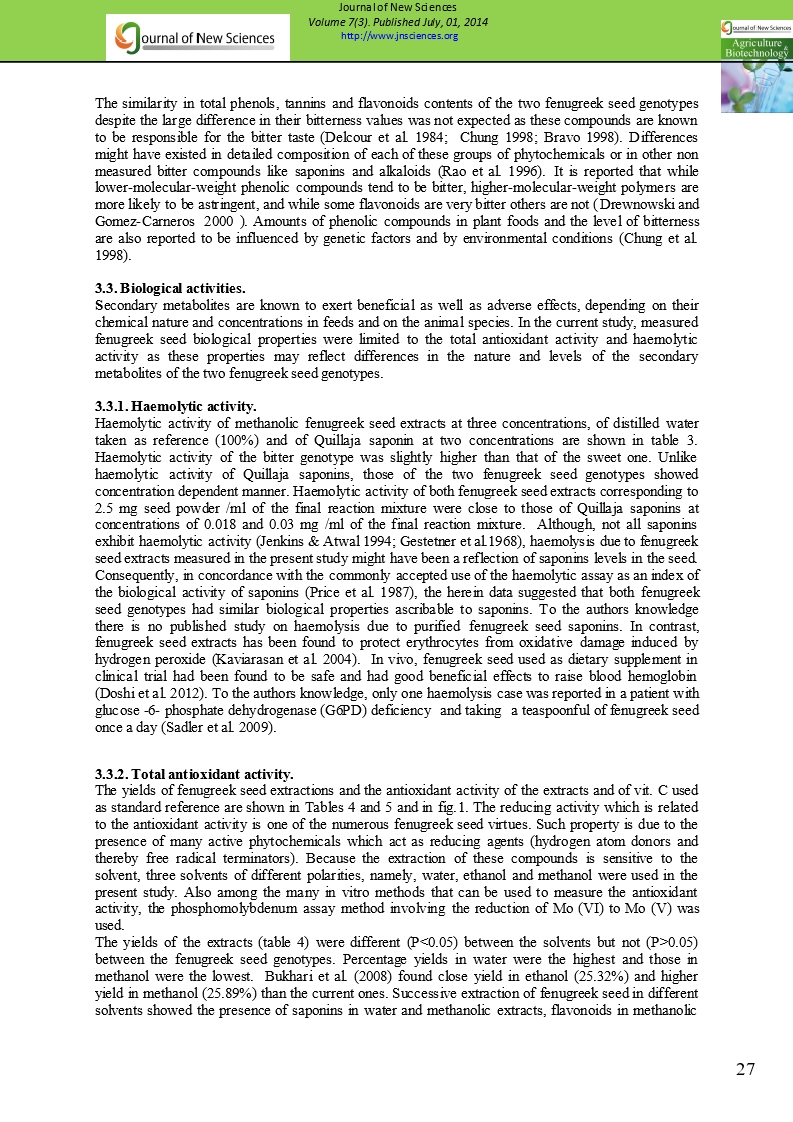- Category: Volume 7
- Hits: 12550
Watering regime affects oil content and fatty acid composition of six sunflower lines

Sahari Khoufi1*
Khalil Khamassi1
Jaime A. Teixeira da Silva2
Salah Rezgui1
Fayçal Ben Jeddi1
1 Unité Cultures Maraîchères et Florales, Institut National Agronomique de Tunisie, 43, avenue Charles Nicolle 1082 Tunis-Mahrajène Tunisie. Université de Carthage, Tunisia
2 P.O. Box 7, Miki cho post office, Ikenobe 3011-2, Kagawa-Ken, 761-0799, Japan.
Abstract - Six sunflower lines were grown under field conditions in order to assess their oil content and fatty acid composition under three watering regimes (rain-fed, 50 % supply, and 100 % supply). Changes in oil percentage and fatty acid composition of sunflower seeds were determined and analyzed using a Soxhlet apparatus and gas chromatography. A significant genotype × water regime interaction for oil content was noted. Contents of linoleic acid and stearic acid were affected only by watering regime and ranged from 4.86 to 12.33 % for the former and from 1.90 to 3.21 % for the latter. Palmitic oil content was affected by genotype: 6.03 %, 7.54 %, 4.18 %, 4.40 %, 5.05 % and 4.52 % for C8.3.1.2, 64A71, C7.3.2.2, C1.3.1.1, C5.2.3.2, and C31.1.1.2, respectively. Oleic content was independent of the effects imposed by genotype and water regime.
Key words: oil content / saturated fatty acids / sunflowers / unsaturated fatty acids / water supply / Soxhlet.


